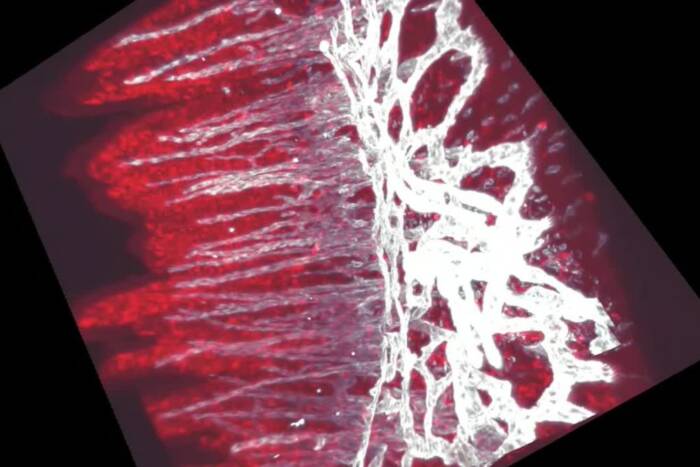Jacob N. Oppenheim
 Jacob N. Oppenheim
Jacob N. Oppenheim
Presented by Marcelo O. Magnasco
A.B., Princeton University
Charting the Vasculome: High Resolution Maps
of the Vasculature of Entire Organs
Richard Feynman said prophetically in 1959, as he heralded both nanotechnology and molecular biophysics, that “there’s plenty of room at the bottom.” In biology the last few decades have seen an explosion in our understanding of the bottom, meaning the molecular scale, and this revolution is here to stay. However attention is now also turning into how to build up from the smaller scales. We can now say that “there’s plenty of room in the middle,” meaning that there is still plenty to understand of the principles of mesoscopic organization of organs between the gross scale depicted in Gray’s Anatomy and the finer structures of a pathologist’s slide.
Jacob Oppenheim attacked this problem ferociously, even though, having been trained mostly as a theorist, he was initially ill-equipped to do so. His direct interest was in vasculature, and he concentrated on an organ whose relatively simple structure still remains mysterious in the middle: the liver. Jacob attacked, single-handedly, the construction of an automated cryosectioning imager capable of imaging the 3D structure of liver vasculature at the scale of hundreds of gigavoxels. It was soon obvious this was not going to be a smooth ride, but he persevered. There was obstacle after obstacle, and the thesis committee insisted he carry out in parallel a Plan B. Which he did, to great success and four published papers. But he still pined for those hepatic fjords, and even though his committee felt he could graduate with plan B, he stubbornly asked for permission to continue attempting to finish a thesis on vascular liver structure.
Like a neurotic one-man orchestra, Jacob still persevered, and even as time was running out he succeeded to produce a hundred-gigavoxel 3D image of liver. He then wrote the algorithms to analyze these enormous stacks of photographs and convert them into the first-ever complete digital map of the vasculature of a rodent liver, a feat no smaller than the first, but requiring a completely different set of skills. Jacob prevailed twice. Jacob’s work is illuminating, and it will continue to illuminate how the little pieces of vasculature are assembled together into structures at various scales of length in order to construct a highly optimized organ.


